Utilizing rich ideas on class warfare with razor-sharp satire, a brilliantly written script, and stellar visuals, Triangle of Sadness captures the absurdist spirit of Luis Bunuel’s The Discreet Charm of the Bourgeoise and even Pasolini’s Salo, or the 120 Days of Sodom in its condemnation of the ultra-wealthy. With a transcendent approach to the “upstairs, downstairs” exploration of how class-structure undermines justice within humanity, the film eventually dives deeper as it becomes a unique survivalist story in which a small ensemble of survivors must collectively work together to survive. The sixth film by Swedish filmmaker Ruben Ostlund, which earned him his second Palme D’Or Award at Cannes, is an unvarnished, brutal satire that touches on many themes that Ostlund has passionately explored previously, such as class politics, privilege, modern relationships, and the primitive nature of humankind. But he’s far from a one-trick pony here as he defies expectations and embarks the audience through a completely different direction that is difficult to anticipate.
Ultimately, Triangle of Sadness could be classified as a companion piece or rather a competition to a trilogy of his previous two films, Force Majeure and The Square, Ostlund’s latest is every bit as combative in its satire, but it extends more nuance and is more sophisticated in both approach and execution this time around. Once again, throwing away subtly in its bristled observations about society’s upper classes, the film’s settings of a luxurious cruise ship and a remote island remove the sense of this just being another retread of other films about class warfare that we have watched many times before has Ostlund ends up diving into deeper themes about neo-liberalism, survival, patriarchy, primal nature, power dynamics, and the contrast and similarities between collectivism and individualism.

The film has moments of abstraction and surrealism, including a brilliant finale that holds some thoughtful ambiguities, but the film is Ostlund’s most straightforward and accessible film to date, and every bit as thought-provoking. This time around, he has a cast of characters that are fashion models, billionaires, cruise line workers, and servants that are cast off by Ostlund’s skilled artistry and arresting visuals, just as it carries on the underlying theme of his male protagonist’s own masculinity in crises that was also apparent in Force Majeure and The Square.
This time around, Triangle of Sadness works more as a sharpened ensemble piece that explores a handful of characters on a cruise ship that spends time with others more depending on each vignette in the chapter of the film, which is separated into three chapters with three different settings. Ostlund has worked with an ensemble before, but with more experience, it appears that he is able to manage it more thoroughly and confidently.
Ostlund’s story mainly follows its shallow protagonists, who consist of two younger professional models, Yaya (the late Charbi Dean) and Carl (Harris Dickinson). Both are in a relationship, bicker as if they have been married for 20 years, and sell the illusion of being wealthy. They both get by with their modeling gigs, live way above their means, but they know how to use their good looks as a form of currency. They are also social media influencers, and they are awarded tons of free products, possessions, and other swag items.
The first chapter of the film opens in Europe, at the backroom of a fashion shoot, where a reality TV crew discusses fashion brands the models work for. Ostulnd’s film is deceptive here as he examines the shallowness of looks, which Carl and his fellow handsome young models frown up and down on command depending on the brand. Ostlund also examines that one with looks, as to go beyond the model industry anymore as well, they must get a strong social media following with their looks. He also takes satiric jabs at the modeling industry that promotes liberal ideas such as equality and environmentalism, which is all a façade as the modeling industry is the most hallowed and judgmental, and designers toss clothes away that are very harmful to the planet. The industry, like many, just adapts and virtue signals as hypocrisy runs rampant.
Even though the industry has changed over the years, where women with curves can grab the spotlight and people of color have opportunities. Yet, there is still a façade to the industry. This is quite telling in the film where Carl attends a modeling tryout for a top designer, and the director isn’t entirely pleased with his facial expressions within the “Triangle of Sadness”, hence the title. Throughout the first segment, Ostlund mainly follows Carl and Yaya. They have a heated argument over the bill at an upscale restaurant. Carl is frustrated that Yaya never picks up the bill, in which Carl eventually pays for their extortionate dinner check after Yaya promised to pay the night before. Yaya, after all, makes more money with her modeling than Carl, and Carl rationalizes in today’s society that chivalry shouldn’t exist as he believes men and women are equal. In a telling foreshadowing, the cab driver on the way to their hotel room informs Carl, “You must fight for her to keep her,” which becomes quite a precursor in their dynamics throughout the film.
After getting accommodated with tickets on a cruise ship, we notice Yaya locking eyes with a handsome crew member after he takes his shirt off. He’s hairier, has longer hair, and looks more masculine than Carl. He confronts Yaya over her obvious attraction, to which she admits she finds him attractive, and he requests that she stop looking at him. Carl ends up complaining about the man to the ship’s steward, Paula (Vickie Berline), who just finished up with her fellow crewmates to say “yes” to each of the cruisers.
The first half of the film is constructed much like a Bunuel film. The film mostly takes place in the interior and exterior of the ship, which includes many memorable interactions. We meet a ultra-wealthy Russian businessman, Dimitry (Zlatko Buric), who brings his wife and a younger woman with him on the boat. We often hear the ship’s captain, named Captain Thomas (Woody Harrelson), who mostly keeps himself locked in his room, and we hear him through the room, drunk locked in the cabin. Dimitry’s wife, Vera (Sunnyi Melles), advocates for the crew to ditch work for a quick swim as she asks them, “What if this was the last day of your life?”
As the trailer suggests, this all builds up to the captain’s dinner, at which point Captain Thomas finally comes out of his cabinet and greets the customers. A highlight in the film, the sequence plays out like the infamous barf scene in Monty Python’s Meaning of Life crossed with more Bunuelian spirit as guests attempt to eat gourmet squid and grotesque oyster jelly as a windstorm rocks the bolt. Paula gets very sick and insists on drinking more champagne to cover up her queasiness, which leads to her vomiting out gold champagne in the year’s most grotesquely memorable scene.
It’s not quite clear if the seafood sat out too long and wasn’t prepared well for what causes the sickness, or if it’s sea sickness from the boat, or just a combination of both. Toilet water eventually floods the hallways that contain fecal matter, which is a clear homage to Pasolini’s Salo. As the passengers retreat back into their rooms, Captain Thomas and Dimitry have hilarious banter back and forth about the virtues and flaws of both capitalism and communism, as Captain Thomas is a self-proclaimed American Marxist Socialist and Dimitry is a Russian capitalist. Talk about the irony in that. They both share hilarious quotes from Mark Twain, Vladimir Lenon, Margaret Thatcher, and Ronald Reagan on the ills and flaws of both systems. Both men basically drink themselves silly as the weather escalates outside until the ship is shipwrecked.
The film’s last chapter, titled “The Island,” is about the aftermath of the shipwreck, which takes place on a deserted island. None of them have the survival skills to last on the island. A lifeboat arrives from the ship, which has Abigail (Dolly De Leon), in which De Leon’s segment holds the most engaging ideas in the film. Her performance is actually the standout in the film as well. Strong consideration for Best Supporting Actor-Female should be given to her commanding role. On the yacht, she was a toiler manager that took orders from Paula and the wealthy. Abigail was just a background character who eventually becomes the most fascinating character in the film. The power dynamics eventually change once she reveals she knows how to build a fire, cook, and fish, and eventually she becomes the leader of this new community. Ostlund examines how all the isms are trivial when it comes to life and death.
What’s fascinating about the film is how the gender roles are reversed in the film. In any other film, it would often be the man being the hunter, gatherer, and leader. Abigail even uses Carl’s good looks as a bartering system—through which he exchanges his intimacy and good luck for shelter and food. The dynamics explored in the film are quite brilliant, all the way up until its conclusion, which ends metaphorically with Ostlund has a lot to say about how power structures and white privilege really work in the modern world.
While Ostlund’s storytelling and themes seem to be evolving, his craftsmanship seems to be excelling on a technical level with each film as well. There is more fluidity with his camera work, and his visual style is more accomplished. Throughout, the film, he stages many of his shots with meticulous wide shots, impeccable tracking shots, and greatly staged blocking that is savored by frequent cinematographer Fredrik Wenzel and Ostlund’s own editing that he shares with co-editor Mikel Cee Karlsson.
Ostlund’s emphasis on class structure and the shifting power dynamics that drive the film’s narrative, which doesn’t appear to be game-changing from the trailer and synopsis, but the journey it takes is quite unprecedented. His films have always incorporated a condemnation of the hierarchy, with each of his films having upsurges of surrealism, abstractions, and metaphorical imagery. But Triangle of Sadness feels the least schematic and holds the most layers of all his films. The narrative completely immerses the viewer in the characters and what always happens next with the impunity they never expected to be confronted with. It’s great to see a filmmaker working today that is in the vein of a modern-day Bunuel, and his latest film deserves to be in the same discussion as the late auteur, and he is still able to build his own singular style. Ruben Ostlund is certainly proving himself to be a brilliant filmmaker of our time and he’s certainly in top form with his best film to date. Triangle of Sadness a subversive masterpiece of our era.
Triangle of Sadness opens in theaters Friday, October 7th


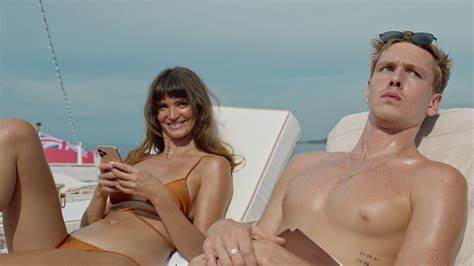

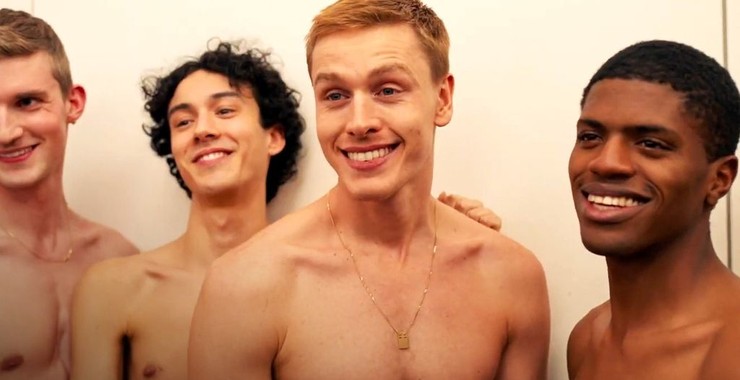

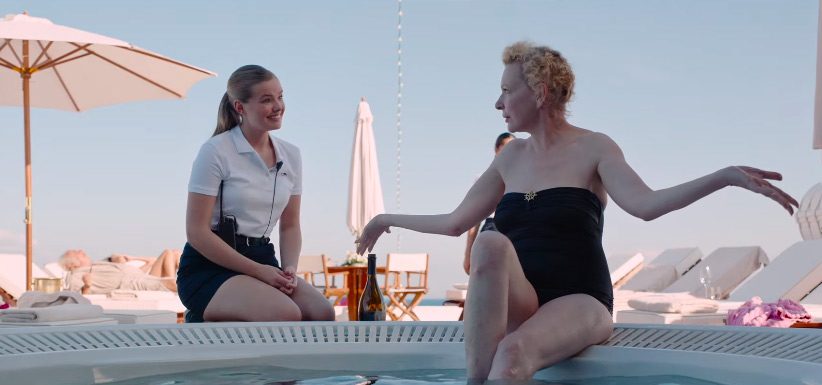


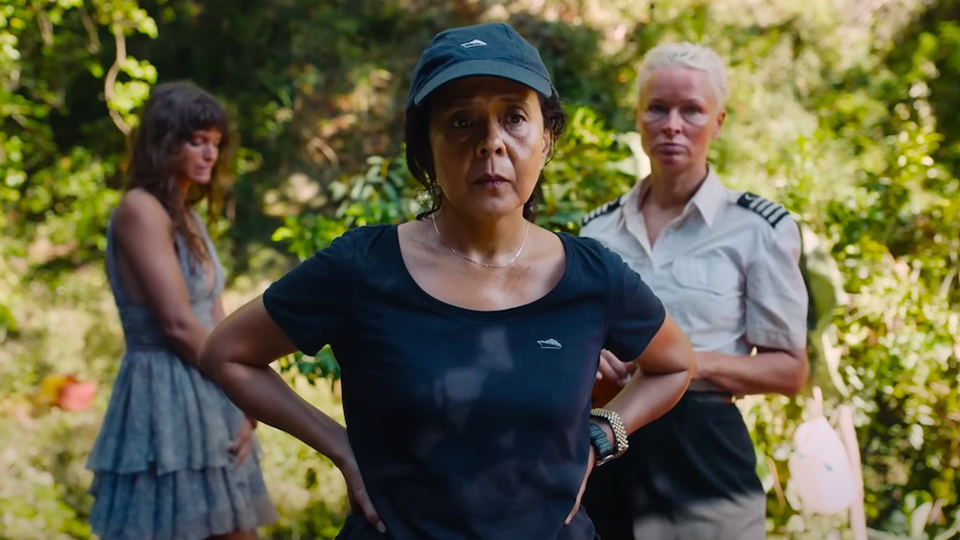
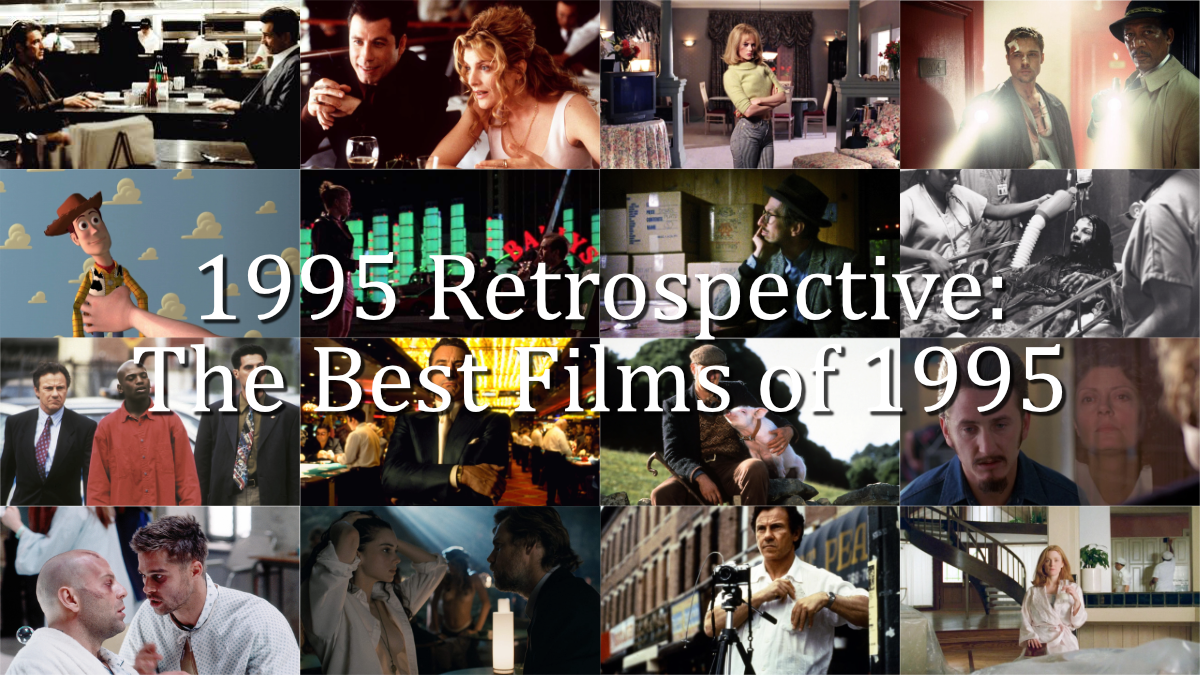
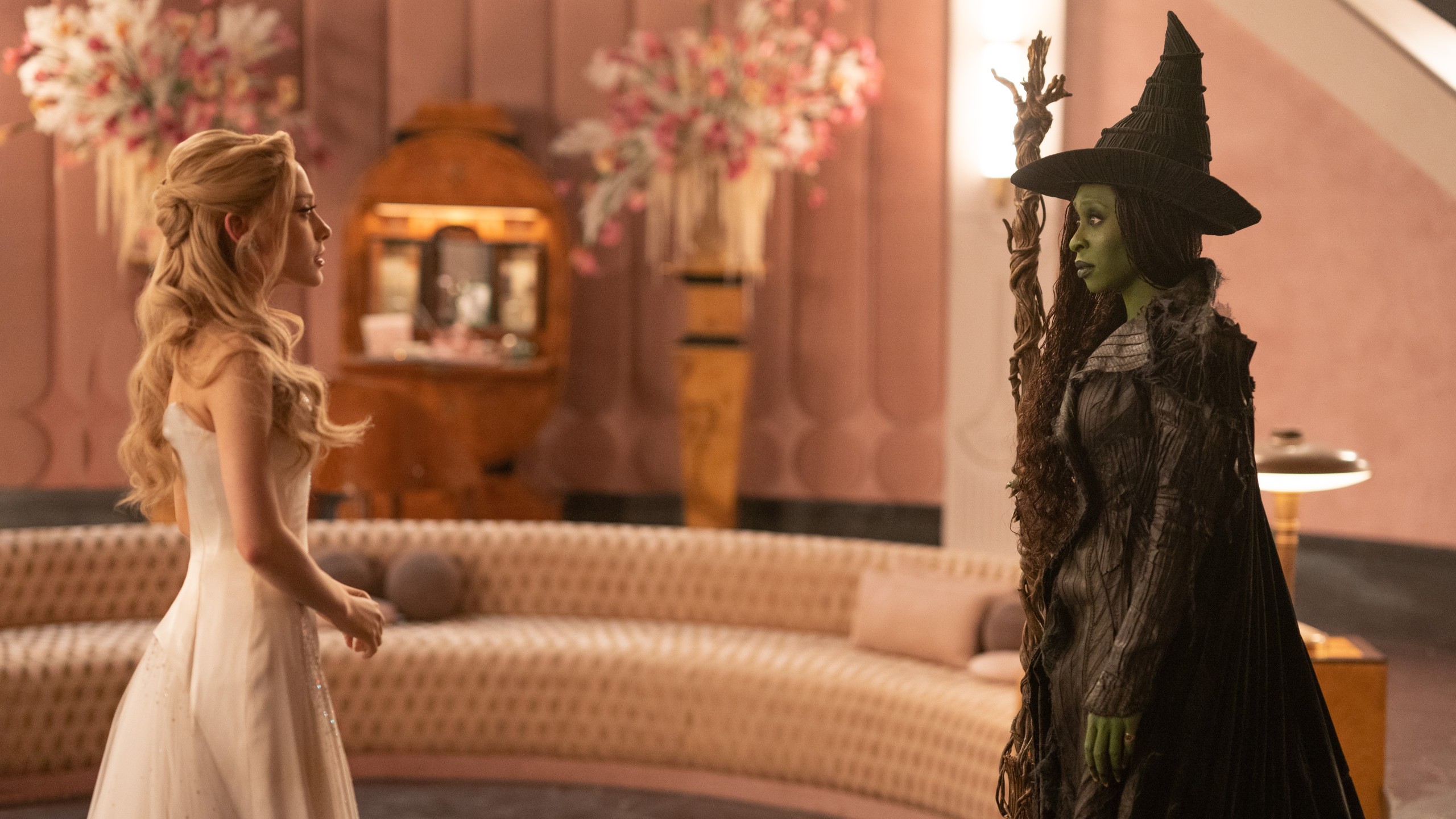
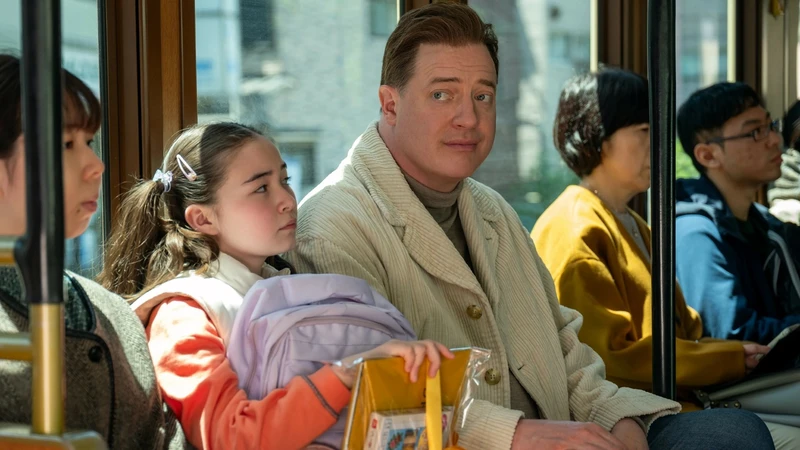
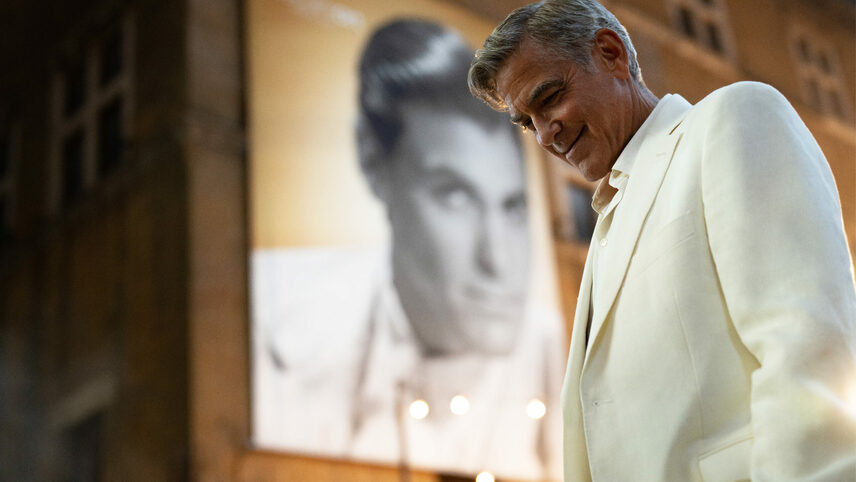
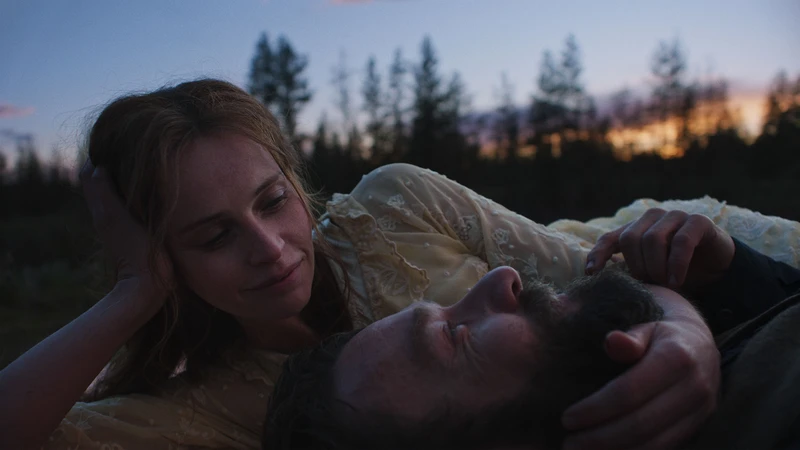
First 4/4 I’ve seen you give personally. I was hyped for this film before but now I’m ecstatic! Ruben hasn’t let me down yet, neither have your reviews!
This could be good. It could be bad. Looks like a lot in one movie but I’m interested
I cannot wait to see this!
Sounds like it will be one of the highlights of the year. Looking forward to seeing it.
Can’t wait!
Thank you for this review! I was unfamiliar with this film but will now have to check it out
Thank you for your comprehensive and thorough movie review. The favorable early reviews for this movie from Swedish Director Ruben Ostlund “Triangle of Sadness” had Cannes audiences gasping in their seats. The trailer made me queasy. This film is heralded as a ruthless satire about the social power of beauty and wealth, a wicked attack on the top 1%. Crowd favorite Woody Harrelson plays the inebriated Sea Captain. This looks like a must see.
A must see after reading your terrific review, Robert. Thank u.
Great review about the movie characters and details.it makes a person want to go see it .especially with a 4 star ⭐️ from you
Looking forward to seeing this, Robert! As always, thank you, I appreciate the time you take to share your thought-provoking reviews!
I am definitely very interested in this but I will probably wait until it’s streaming somewhere! Great review.
I’m very much looking forward to this film and loved your review of it. Can’t wait to check it out (hopefully soon)!
A pitch perfect satire about wealth and status
So intrigued to see this film. What an eloquently written review, I always implicitly trust this writer’s opinions about movies because he knows his stuff and has such a great eye for what’s good
Anyone else felt the value just like me?
This is film that you can’t predict a single thing about from beginning to end. What a surreal masterpiece. And so thematically linked to The Menu.
Jbasss – trig homework answers Hilqua crpxfs
⚡️เกมส์ ทำเงิu สำหรับ «เซียนพนัu»เมนูไทย เล่นง่าย ได้เงินจริงเล่นขั้นต่ำแค่ 1บาท แตกเป็นแสuแตกง่าย คoมโบ้เวอร์พร้อมเกมอื่นๆ อีกมากมายเว็ปนี้เว็ปเดียวครบวงจร
Thanks so much for the blog.
Fantastic post.Thanks Again. Keep writing.
Really appreciate you sharing this post.Really thank you! Will read on…
delante apartments gazebo apartments palmetto apartments
wow, awesome blog post.Really looking forward to read more. Much obliged.
Your article helped me a lot, is there any more related content? Thanks!